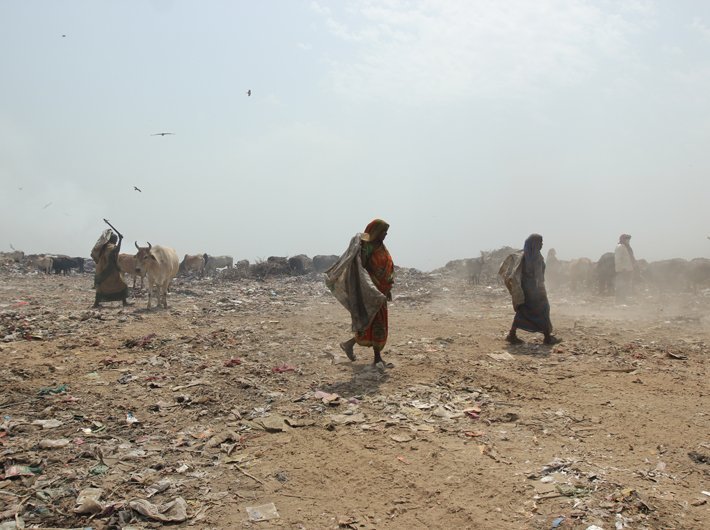Inequality in the world has been shrinking consistently since 1990, mostly due to populous countries such as China and India catching up to richer countries.
There has been much progress toward ending poverty: the World Bank Group’s latest numbers show that since 1990 nearly 1.1 billion people have escaped extreme poverty. Between 2012 and 2013 alone, around 100 million people moved out of extreme poverty. That’s around a quarter of a million people every day. This is cause for optimism, writes Annette Dixon, vice president of the South Asia Region of the World Bank.
“But extreme poverty and the wrenching circumstances that accompany it persist. Half the world's extreme poor now live in sub-Saharan Africa, and another third live in South Asia. Worldwide nearly 800 million people were still living on less than $1.90 a day in 2013, the latest year for which we have global numbers. Half of these are children. Most have nearly no education. Many of the world's poor are living in fragile and conflict afflicted countries. In a world in which so many have so much, it is unacceptable that so many have so little, Dixon wrote in a blog “It’s possible to end poverty in South Asia”.
The international community has laid out a clear vision of what the world looks like in 2030 – it is a world free from extreme poverty with more opportunity for all. Everyone should have a chance for a better life -- and we know it’s possible. This is why the World Bank Group has committed to two clear goals: ending extreme poverty by 2030 and boosting shared prosperity for the poorest 40 percent of people in every country.
“But we have much further to go, and we know that the road ahead may not be easy. Our most recent flagship report pointed toward inequality as a persistent barrier to progress -- and one that we will have to tackle if we want to achieve our goals.”
Dixon said that the global story on inequality is mixed. “The gap between all people in the world has been shrinking consistently since 1990, mostly due to populous countries such as China and India catching up to richer countries. And even within countries, inequality has been falling in many countries since 2008—for every country that saw a substantial increase in inequality during this time period, two others saw a similar decrease.”
However, inequality is still far too high across the world, and important concerns remain around the concentration of wealth among those at the top of the income distribution—an issue on which we need to know much more. Inequality in South Asia appears to be moderate when looking at standard measures such as the Gini index, which are based on consumption expenditures per capita. But other pieces of evidence reveal enormous gaps, from extravagant wealth at one end to lack of access to the most basic services at the other.
She goes on to write that at the World Bank Group, “we see three clear ways to achieve these goals. Together with our partners we can promote sustainable and inclusive economic growth especially through boosting private investment in infrastructure. Together with our partners we can invest in human capital starting from a child’s early years, because people with better skills, education, health and training will make the biggest difference to countries’ ability to grow and compete. Together we can foster resilience to global shocks, including forced displacement, climate change and pandemics, which threaten to roll back our hard-fought development gains”.
South Asia, for example, is particularly vulnerable to natural disasters, as 2015’s earthquake in Nepal illustrated with its tragic loss of life. From Afghanistan to Bangladesh, much of South Asia is located in one of the highest seismically active regions in the world. More than 600 million people live along the fault-line across the Himalayan belt that runs through Afghanistan, Pakistan, India, Nepal and Bhutan. Disaster preparedness is a must as these disasters fall hardest on the poor.
“South Asia is the world’s fastest growing region but we cannot rely solely on economic growth to end poverty. A country’s growth must benefit the poorest the most, and unlock opportunities for today’s extreme poor to get better jobs, access better quality services, and lay the foundations for the next generation to escape the confines of extreme deprivation.
“I believe that it is possible to end extreme poverty by 2030 and boost shared prosperity among the poorest 40 percent in every country. We look forward to continuing our work with all partners across South Asia – citizens, governments, civil society, and the private sector. Together, we can do it – we must do it,” she wrote.
